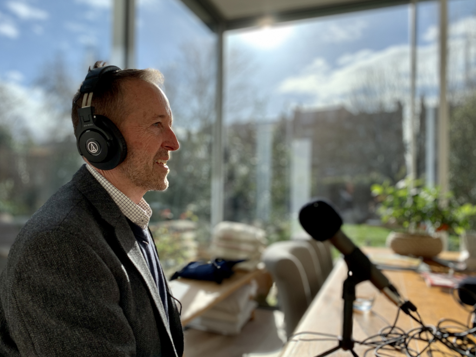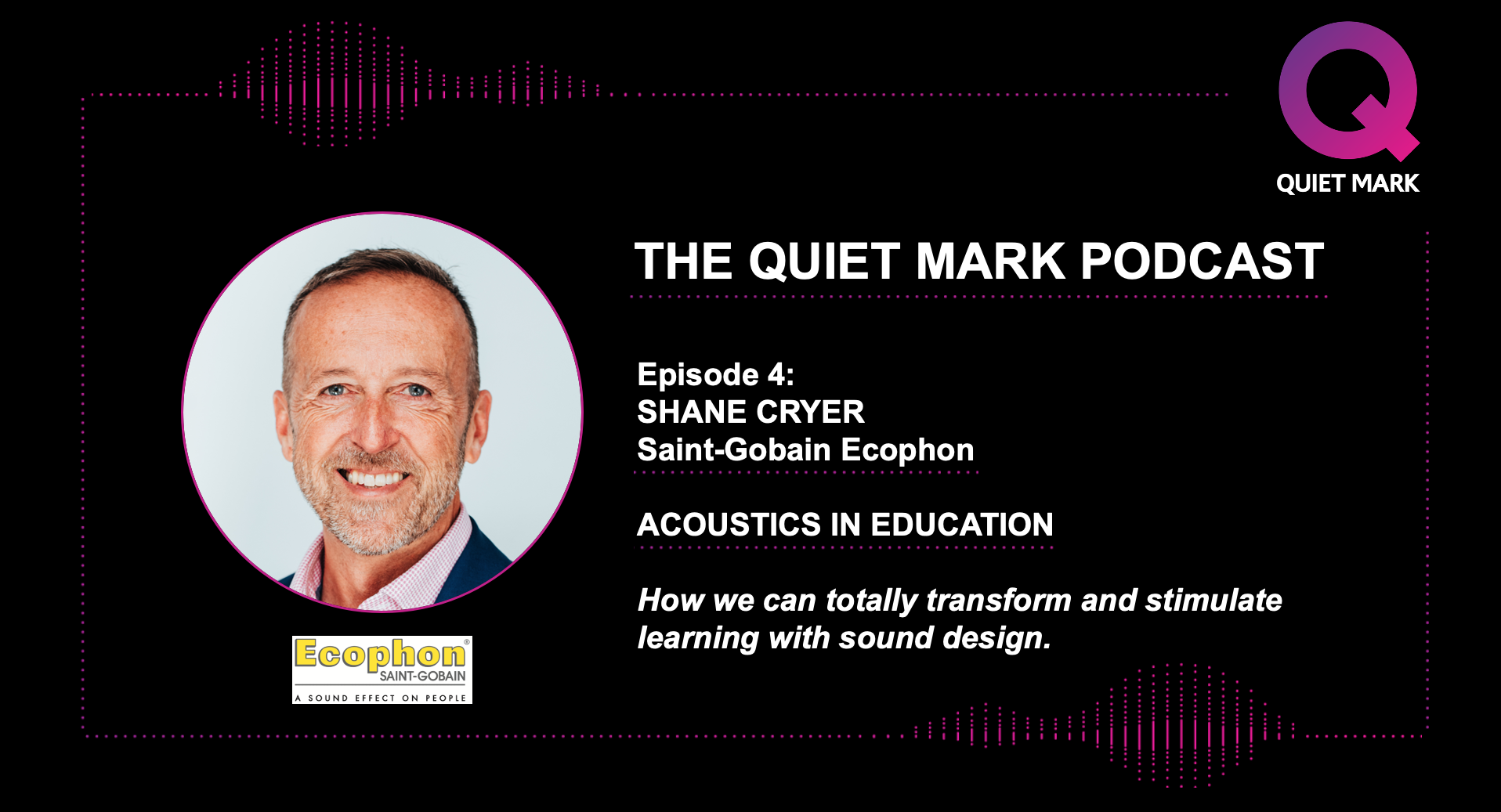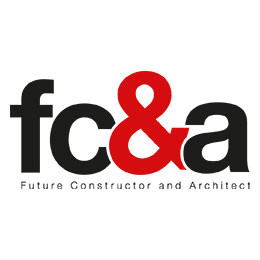Teacher stress: The shocking impact acoustics have on wellbeing


Teacher stress: The shocking impact acoustics have on wellbeing
Poor classroom acoustics can impact teachers’ stress levels, voices and even life expectancy. Acoustics expert Shane Cryer explains...
By SOPHIE BARTON for WORK IN MIND
Cast your mind back to the heady days when crowded bars and packed offices were a part of daily life. Did you ever find yourself craning forward in a bid to hear your partner, or struggling to concentrate amidst the hubbub from colleagues? It can be frustrating, not to mention fatiguing.
While many of us aren’t overtly aware of it, acoustics often shape our quality of life. And for teachers, the impact of poor acoustics can be devastating. Hoarseness, elevated stress levels, fatigue, migraines and even early retirement are just some of the consequences of consistently competing against background noise.
“Anecdotally, we hear all the time that teachers are losing their voices,” says Shane Cryer, the Education Concept Developer at acoustic specialist Saint-Gobain Ecophon. “They often have to retire early, and older female teachers often notice that they have deeper voices than their non-teaching female counterparts, because their vocal cords have been stressed.”
Worryingly, statistics from Voice Care UK show that teachers are eight times more likely to suffer from voice-related health conditions than other professions. And there’s an economic price to pay too – one survey from the Royal National Institute for the Deaf revealed that the cost to schools is calculated at around £15million a year.
A challenging industry
All this is heaped on top of an already challenging landscape. Research by charity Education Support shows teachers are struggling more than ever. Staggeringly, 74% have experienced behavioural, psychological or physical symptoms due to their work, while 52% have considered leaving the sector due to the pressure on their health and wellbeing. Burnout, it seems, is rife and COVID-19 has undoubtedly not helped the situation.
Shane says, “To have good speech intelligibility, particularly for primary school students, teachers need to speak 15 to 20 decibels above the background noise level. But if you’re teaching in an echoey environment, you have traffic noise coming through old sash windows or just a noisy class, you have to significantly raise your voice to achieve that 15-20 decibels. And if you raise your voice just 10 decibels above a conversational tone and try that for three or four hours, you’ll be almost hoarse by the end of the day.”
And the impact doesn’t stop there. Research reveals that 80% of teachers cite noise as a stress-inducing factor, and raising your voice increases your heart rate and blood pressure. Over time, this has the potential to cause potentially life-limiting health implications.
Video: View Shane Cryer’s ‘Acoustics in Education’ Masterclass at Quiet Mark’s Acoustics Academy launch event
Sound and stress
One seminal study by Dr Gerhart Tiesler, from the University of Bremen and Dr. Markus Oberdörster, from Ecophon Germany, brilliantly highlights this stress-effect. When teachers’ heart rates were continuously monitored, it emerged that those using a classroom without acoustic refurbishment worked with a relaxed heartrate for just 60% of the time. In comparison, those in a classroom with acoustic refurbishment worked with a relaxed heartrate for more than 80% of the time.
Ultimately, in the lesson that was 5-10 decibels quieter, the teacher taught with up to 10beats/minute reduced average heartrate. Clearly, acoustically optimal classrooms led to significantly less working stress.
“When you’re compelled to raise your voice 10 dB(A), decibels above a conversational tone, you also raise your heart rate and blood pressure,” says Shane. “If you’re experiencing that over an entire career, your longevity will likely suffer. You can’t expect to live as long, because of the stress on your body.
“But ultimately, wellbeing can be so dependent on the environment. If you’re in a rural 1970s primary school with a low ceiling, some form of acoustic treatment and curtains that absorb sound, it won’t be an issue. But for a teacher working in the inner city, with buses pulling up outside and students running up echoing Victorian corridors, it’s a completely different scenario.”
Outdated spaces
Shane adds that the common combination of old buildings and modern pedagogy means teachers are often working in spaces that are not adequately designed to cope with today’s noise levels.
“During the Victorian era there was a huge building programme of schools, but of course teachers were more dictatorial and children spoke far less – the classroom was very quiet,” he explains. “But now, teaching is about collaborative “deep learning,” working together in groups and discussion. That’s very beneficial for students, but it introduces a whole level of sound that just wasn’t there before. We are moving forward in the way that we teach, but our environment doesn’t always support that activity.”
There is another aspect to consider when it comes to modern day teaching methods – an acoustic phenomenon called the Lombard Effect. If you have multiple groups of students talking at the same time in a classroom with poor acoustics, groups will start talking louder, in a bid to be heard above the noise interference. This then leads to a vicious circle, because the noise interference level increases, then everyone raises their voices again and the noise in the classroom rises once more.
“We see this in restaurants too,” explains Shane. “If you can sit with your back against the back of the chair in a restaurant and have a conversation across the table, the sound level is fine. But in so many restaurants, you have to lean in to be heard, because all the diners are raising their voices to cope with the noise interference. That can affect your stress levels, and even the taste of your food.”
A behavioural impact
But there is some good news – the Lombard Effect has an inverse. That means that when you acoustically treat a space, it can have an even better effect than you might predict.
“You can create the opposite effect too,” says Shane. “If you make the class less reverberate, everybody drops their voice and treats it more like a library. In particular, the extrovert teenagers who might play up, shout out or feel perfectly comfortable creating all sorts of trouble in a noisy environment actually feel a bit uncomfortable being so loud. Everything comes down lower than you would expect, and that helps students focus, memorise and progress with their deep learning faster. And of course, the teacher is a much happier teacher as a result.”
Likewise, students are known to respond more favourably if their classroom acoustics enable their teacher to speak in a conversational tone. “Teenage boys in particular behave or respond better with a conversational tone,” says Shane. “A louder tone is perceived as being dictatorial and it has a particularly detrimental effect on the way teenage boys react and behave.”

Image: Shane Cryer at Quiet Mark HQ appearing as a guest on Episode 4 of The Quiet Mark Podcast
Acoustic solutions
So, what form might acoustic improvements take? When refurbishing a Victorian or Edwardian building, acoustic rafts are often in order. “They come in all sorts of shapes, including clouds, and they fix to the existing soffit without disturbing what is already there,” says Shane, who recently spoke about acoustics in education on the Quiet Mark podcast, a series exploring the role acoustics will play in the future of global living, building and product design. “If it’s a high ceiling, above 2.8metres, it’s likely we’ll need some acoustic wall panels too.”
Here, biophilic design comes into play too. Increasingly, studies show that exposure to nature and even images of natural scenes can help reduce stress levels and enhance cognitive performance.
“If you screen print acoustic panels with forest scenes, green leaves, lakes or mountains we’ve found it reduces everybody’s heart rate and makes them feel better,” says Shane. “Refurbishment might involve half-a-dozen horizontal acoustic rafts, suspended from the ceiling, and one or two wall panels. But if the classroom already has a suspended ceiling, it might simply involve removing the non-acoustic tiles that are hiding services and replacing them with acoustic tiles. This is also an ideal solution in modern schools where the concrete soffit is exposed, as part of the thermal strategy to aid natural ventilation.”
A need for awareness
Presumably, within the education sector there must be a growing realisation that optimal acoustics are well worth the outlay when building new schools? There is, after all, surely potential for a great return on investment, given the reduced staff stress levels, decreased migraines and even improved pupil performance?
“Whilst there are many exemplary new-build schools, unfortunately, there are some that don’t live up to expectations,” admits Shane. “Most of the new school builds are now built by big design and build contractors on very tight profit margins; value engineering is not uncommon and good acoustic designs can be compromised by last-minute switching to cheap, inferior materials. Previously, the acoustic specification would have been driven by architects who would often be more concerned about these issues, with time for a lot more consultation.
“It’s important to remember that this isn’t just a recommendation. BB93 Acoustic Design of Schools: performance standards, which lays out the minimum standards that must be met, is part of Building Regulation E4, a statutory requirement. The challenge comes in policing the standard with post-occupancy evaluation. Employing acoustic consultants to prove the school meets these requirements before hand-over is just not happening enough.
“Nowadays, teaching staff are so happy to have a new building, they rarely question the acoustics. There’s also a lack of knowledge and understanding amongst teachers too – we struggle to let them know what a huge effect this has on their wellbeing.”
While many teachers may be unaware just how powerful acoustics are, Shane says certain projects shine a particularly bright spotlight on the benefits.
“We are often asked to optimise the acoustics in one specific classroom at a school, perhaps because a child with SEN needs a high-quality acoustic environment to help them,” he explains. “You then end up with one classroom that really stands out from the rest and a month or so later, the head often calls to say that all the teachers want to work in the refurbished classroom, because it feels so much better.
“Sadly, we have an increase in all sorts of behavioural problems, and today’s teachers are really up against it. So, if optimising acoustics can make the job less stressful and help improve student behaviour, it’s going to make a big difference to their stress levels. In fact, it could make a big difference to their lives.”
Listen to Shane Cryer discuss Acoustics in Education on Episode 4 of the Quiet Mark Podcast HERE.
Shane Cryer is Education Concept Developer at acoustic specialist Saint-Gobain Ecophon. Quiet Mark’s Acoustics Academy is an online directory, giving architects, builders and designers a guide to expertly verified leading acoustic solutions.
Read the original article on Work In Mind here.













 Quiet Mark Founder
Quiet Mark Founder